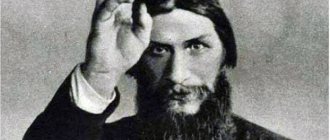A healthy lifestyle is very popular today. It is advertised on television, on the Internet and on the streets, many gyms are opened, many are trained as trainers and begin to lead people to an ideal body. Along with the usual physical activities, many alternative and foreign sports options are emerging: martial arts, Pilates, and, of course, yoga.
It is about the last option that disagreements arise, because yoga is not only sports activities, it is also a certain worldview of a person and spiritual practices. What is the attitude of the Orthodox Church towards yoga and is it possible for an Orthodox person to practice it?
The position of the Orthodox Church towards the teachings of yoga
The Orthodox faith does not imply the performance of any specific actions or movements, similar to asanas in yoga. Nevertheless, there are many people who consider themselves Orthodox, but at the same time practice yoga.
Since most people in Russia are considered adherents of the Orthodox Church, it is necessary to think about what Orthodoxy thinks about yoga. Most Orthodox priests speak rather negatively about when a person takes the path of yoga practice. But some modern priests can express a positive point of view. It must be remembered that this is a purely individual reaction of each individual church minister and it is almost impossible to determine a single correct position.
Nevertheless, it is possible to identify the main negative points for which Orthodoxy and yoga are considered incompatible. Among them, the most common ones are:
- many supporters of Orthodoxy highlight the negative impact of meditation, calling it a “near-religious” aspect in yoga;
- it is necessary to distinguish between an adherent of the practice of yoga as a physical exercise and as a philosophy, worldview and religion;
- unexplored abilities of practice and their influence on the human mind;
- the difference between Orthodox canons and commandments and Ayurvedic ones;
- difference in nutrition and fasting;
- the difference in man's acceptance of God;
- the difference in the feeling of energy.
There is a branch of yoga called kundalini yoga. In general, kundalini is a specific energy that flows in the human body and is vital. In this case, yoga implies the beginning and concentration of it near the base of the spine, that is, the area below the heart. The Orthodox Church believes that sensations during reading prayers or requests to God should not be below the heart zone. If this happens, then it is necessary to reject such sensations. Thus, many aspects of Orthodoxy and yoga are practically incompatible.
Patriarch Kirill’s opinion is that yoga can complement Orthodoxy if a person engages in it as a physical activity, but continues to believe as an Orthodox person and adhere to all the canons of this faith.
Hidden Flame: An Orthodox View of Yoga
Do not be unequally yoked with unbelievers, for what fellowship has righteousness with iniquity? What does light have in common with darkness? What agreement is there between Christ and Belial? Or what is the complicity of the faithful with the infidel? What is the relationship between the temple of God and idols? (2 Cor. 6:14–16)
I am a Catholic by birth. I loved to pray. Walks in the forest, games on the river, wanderings through the vast expanses of imagination. All this was a form of prayer for me: silence, peace, almost hesychia, so natural for a child. I was not constantly in this state of prayer. But I recognized him. This experience was given to me for free, simply as an action in my heart.
We all – to varying degrees – experience this. Some names are given to this - or not given at all, because all the words seem so inappropriate to express the movement of the heart towards God. When we are innocent at heart, especially in early youth, there is an experience of two in this experience. Loving and Beloved. Somebody else. As a child, I could not clearly identify this Presence of Christ, just as I never called my parents by name. I just knew them.
***
Joseph Magnus Frangipani
When I was in high school—my grandparents sent me to an all-boys Catholic school—I wanted to become a Trappist monk. I attended services regularly and read the Bible often. Scripture is truly like a door. You can walk through it and the Holy Spirit will take you to different places without ever leaving your soles off the ground. But I knew there was something more. That there is a difference between reading about events and experiencing an encounter with Him.
Dr. Harry Bouzalis writes in Sacred Tradition: “We are not called to simply “follow” the Tradition or “imitate” the Tradition. We are called to experience it... as the saints did and continue to do now.” We know that something is missing in the world around us. A certain wealth, a certain depth that we intuitively know about and strive for. This, of course, is the wealth of God's love, light and grace. But at that time in my life, I didn't have the words to express it. Like many, I associated this dissatisfaction, this anxiety with other things.
A psychology professor introduced us to self-hypnosis. This is how my affair with meditation began.
In high school, a psychology professor introduced us to self-hypnosis. And soon my affair with meditation began. I relaxed. I threw caution to the wind for a new experience. I felt as if the back door of my soul was constantly open. I rejected God “to be on my own.” I experienced - very clearly - how the light went out inside me. The Presence, the Someone, the Friend respected my decision. It felt like He had quietly left. He respects free will. He never imposes Himself. He knocks on the door of the heart and waits.
***
I didn’t know then that Tibetan Buddhism comes from the shamanic religion Bon
I started meditating regularly. At first, as a teenager, it was very difficult for me to sit for hours with old Tibetan monks, completely motionless, turning all my thoughts to the bare wall and the bronze statue of Buddha in front of me. I delved into the teachings of reincarnation, karma and samsara[1]. I did not know then that Tibetan Buddhism comes from the shamanic religion of Bon and that it includes astrology, witchcraft and other occult practices.
I wanted to know how to overcome anxiety and depression, how to collect my scattered thoughts. Visiting Buddhist meditation halls and Hindu ashrams, I was intrigued by the “spiritual fireworks”: ecstasy, trance, feelings and visions. All this is associated with various levels of meditation and yoga and multiplies with practice. These and other experiences are sometimes given by siddhis or powers accumulated through sadhana (the practice of meditation and yoga). The affair grew into infatuation, infatuation became a habit. And I didn’t notice how my initial “harmless” interest in yoga and meditation solidified into attachment. I plunged into this spiritual abyss for more than ten years.
And all these years I asked different questions. For example, what do Catholic priests and monks know about whether the early Christians believed in the pre-existence of souls and reincarnation? They replied that they knew nothing about it. And in addition they asked: what is this anyway? Immersing myself more and more in the sources and concepts of Eastern religions, passionately wanting to penetrate the bardo - the intermediate dimension between the spiritual and material worlds - I began to study the “Tibetan Book of the Dead”.
I studied all the mystical and esoteric literature that came into my hands, always carried a volume of the Bhagavad Gita in my back pocket and read the works of Paramahansa Yogananda. I immersed myself in reading Osho, Ram Dass and Ramana Maharshi, convinced that there was no being more divine than myself. But my illusory self was destroyed by myself. According to many books I had read and what I had heard, there could not be a personal relationship with the Divine, and this created conflicts in my soul. The peace and quiet of childhood is gone. The deeper I went into meditation and yoga, the more often sudden, unexpected thoughts came that brought me pain. My soul was amazed. It was a very dark and sad period of my life.
In search of peace, I took the bodhisattva vow and joined a contemplative and peaceful Buddhist monastic order, trying to somehow gain a foothold somewhere. After an initial period of relative peace, audacity, even recklessness, and restless spiritual movements appeared. It was something like spiritual alcoholism. But I didn’t suspect it then.
***
The prodigal son ate the food of pigs in a distant land. But he returned home when he remembered the taste of bread in the Father's house. For more than ten years I lived in this distant country and ate its food.
I have seen so many people, both friends and strangers, seeking to dissolve themselves. They had an insatiable desire to lose themselves, but not in the life and light of God, but in the darkness of emptiness, separating themselves from the Love that surpasses everything. This department is hell. Many men, women and children seek this hell, rolling through promiscuous relationships and jumping out of drug windows through which so many have fallen.
I studied and practiced kundalini yoga and shamanism, learned the presence of fear and cold.
I have gained a reputation as a tarot card reader. I have taught yoga and been an instructor in guided meditation and chanting groups in deep deserts. We experimented with astral projection, a guided out-of-body experience through the bardo described in Tibetan books. I carried with me everywhere not only the Bhagavad Gita, but also the Upanishads and Buddhist sutras. All these activities took me further and further away from the holy mountain of Christ. Drop by drop, the stone wears away. With my forehead smeared with orange paste, I rang the bell, bringing fruit and lighting a fire in worship of Krishna, wandering barefoot through the streets of Eugene, Seattle, Portland, and then Rishikesh, Haridwar and Dharamsala in northern India.
***
Archimandrite Zacharias
“Separated from God, the Source of life,” writes Archimandrite Zacharias in the book “The Hidden Man of the Heart,” “a person can withdraw only into himself... Gradually he becomes empty and corrupted.”
In Buddhism, God, soul, personality is an illusion that must be overcome, discarded, destroyed
Buddhism rejects individuality, soul and personality. Folds his hands in silence against God. Suffering is not transformed there. In Buddhism there are crosses, but resurrection is not possible. One could say that Buddhism finds the empty tomb and declares its emptiness as the natural state of things, even the purpose of existence. In Buddhism, everything: heaven, hell, God, the individual, the soul, the personality - is an illusion that must be overcome, discarded, destroyed. That's the goal. Complete destruction. In a 9th century saying, the essence of Buddhism is expressed as follows: “If you see Buddha, kill him.”
Buddhism does not claim - and is not capable of - healing the soul and body. Soul and body must be overcome and abandoned. In the Orthodox Church, on the contrary, the soul and body receive healing. Buddhism teaches that nothing has intrinsic value. The Church teaches that everything created by God has intrinsic value. Including the human body. We are complex beings. The actions of our body, mind and soul are coordinated. And these coordinated actions directly depend on our communication with God and the spiritual sphere.
For Orthodox Christians, everything - even suffering - is a secret door through which we meet Christ and through this we embrace each other.
***
One autumn day I came to Rishikesh in India. This city is named after the pagan god Vishnu - “the god of feelings.” Rishikesh is the “Yoga Capital of the World”. It is generally accepted that this is the place where yoga originates. For 40 days I studied and practiced the so-called “secret path” of integral yoga in the foothills of the Himalayas. It included not only gymnastics, as in America, - each lesson began and ended with a prayer to the “god of the roaring storm” Shiva.
Yoga has historical roots in Hinduism
At that time, I was teaching English to Tibetan refugees and working for the Tibetan Government in Exile as an editor. Yoga has historical roots in Hinduism. Interestingly, while talking to a Rinpoche[2] at the Dalai Lama's monastery in Dharamsala, I asked who or what these Hindu gods are according to Buddhist cosmology. His answer was chilling: “They are created beings with an ego... They are spirits held in the air.”
What is yoga? What is kundalini energy?
The literal meaning of the word “yoga” is “ties, connection.” This means binding your will to the kundalini serpent and raising it to Shiva
Awakening kundalini energy
The literal meaning of the word “yoga” is “ties, connection.” This means connecting your will with the kundalini serpent[3] and raising it to Shiva, knowing your “true” essence. All areas of yoga are interconnected, like the branches of a tree. Trees with roots descending to the same areas of the spiritual world. This is reflected in the ancient books of Bhagavad Gita and Yoga Sutras of Patanjali. I learned that the ultimate goal of yoga is to awaken the kundalini energy coiled at the base of the spine in the form of a serpent, and this will lead to a state that allows one to realize Tat Tvam Asi[4].
Of course, yoga can initiate unusual states of mind and body. But the same thing can be achieved with the help of psychotropic drugs and tasteless, invisible poisons. Through yoga one gradually becomes familiar with shakti, whom yogis refer to as the “divine mother,” the “dark goddess,” associated with other major Hindu deities. This energy is not from the Holy Spirit, and it is not just aerobics or gymnastics. Attached to this entire system are bhayans and kirtans - the pagan equivalents of Orthodox Christian akathists, and to the Hindu gods - also mantras, which are “sacred” formulas, like telephone cards or telephone numbers of various pagan gurus and gods.
How is yoga related to Hinduism?
To be honest, Hinduism is not a single religion. This is the term used by the British to describe various cults, schools of thought and shamanic religions in India. If you ask a Hindu if he believes in God, he will probably say that you yourself are a god. But ask another and he will point out a rock, or a statue, or a flame of fire. This is the Hindu polarity: either you yourself are God, or everything around you is God.
Yoga functions as a missionary arm of Hinduism outside India
Yoga comes under the umbrella of Hinduism and for many reasons is the tip of that umbrella. It functions as a missionary arm of Hinduism and the New Age outside India. Hinduism is like a nesting doll: you discover one philosophy and it contains ten thousand others.
And undiscovered ones carry risks. You can swim easily and carefree in unknown waters. But if you don't know about the tides and the characteristics of the area, you can get into trouble. You could be carried away by an undercurrent. You can get hurt on invisible rocks, or catch an unknown infection, or get poisoned.
This happens in spiritual life too.
When we dive in the ocean, we may be attracted to bright, colorful or interesting fish, but the most colorful and exotic are the most poisonous and deadly.
When I first came to India, I took off my shoes and socks and walked through spilled water, coconuts, scattered sweets and the twinkling lights of the Kalkaji Temple. This is one of the most famous temples dedicated to Kali - the “goddess of death”. I didn’t know that I was in the middle of a crowd celebrating its most important holiday. The temple was in chaos and tensions reached a dark climax.
The woman next to me had her eyes rolled back in her head, her arms were moving back and forth, her tongue was hanging out of her mouth, her legs were jerking up and down like a puppet.
Thousands of men, women and children gathered in that Rishikesh temple to worship this demon. The woman next to me had her eyes rolled back in her head, her arms moving back and forth, her tongue hanging out of her mouth, her legs jerking up and down like a puppet. It was obvious demonic possession.
One day I venerated the Sitka Icon of the Mother of God and experienced indescribable warmth, tears of humility and love, clarity of mind and peace. It was as if I had walked past a window full of warm, fragrant sunlight. At Kalkaji Temple I experienced the opposite.
Kali is often depicted as a fearsome, blue-skinned, many-armed goddess standing on top of human heads with a bloody tongue hanging from her mouth. She is wearing a necklace made of human heads and a belt made of hands.
Yoga poses are not neutral. All classical asanas have spiritual meaning
I had coffee with people who were active in the yoga, Hinduism and New Age movements in America, who ate the meat of corpses from Nepalese cemeteries to initiate into the cult of this goddess. Not long ago, the popular British newspaper The Guardian wrote that a child was sacrificed in honor of the demon Kali. All this is typical of Hinduism. And this is all connected with yoga, because yoga poses are not neutral. All classical asanas have a spiritual meaning. For example, as one journalist writes, the Sun Salutation—perhaps the most famous sequence of asanas, or poses, of Hatha Yoga, especially popular and widespread in America—is actually a Hindu ritual.
“Sun salutations have never been a hatha yoga tradition,” writes Subhas Rampersaud Tiwari, professor of yoga philosophy and meditation at the American Hindu University in Orlando, Florida. “This is a full circle of ritual veneration of the sun, gratitude for the source of energy.”
Thinking of yoga as just a physical exercise movement is tantamount to “saying that baptism is just an underwater exercise,” writes Swami Param, a spokesman for the Academy of Classical Hindu Yoga and Dharma Yoga Ashram in Manahawkin, New Jersey. .
It is Goddess Kali who seeks to unite practitioners through shakti with Shiva through yoga. In her temple, near New Delhi, I saw a disgusting self-explanatory idol: a stone with strange beaded eyes and a beak, covered with a yellowish, nasty and lumpy edible substance.
In Hinduism, idols are "awakened". They are dressed. They are fed. They sing to them. And then they are put to bed. I have taken part in these ceremonies hundreds of times.
The Yoga Journal has over 5 million subscribers and is the best-selling yoga magazine in the world. It is significant what the Yoga Journal wrote when, proving the superiority of yoga as psychotherapy, it speaks of the Hindu philosophy hidden behind the practices of yoga:
“In the yoga perspective, all human beings are “born divine,” and each person has at his core a soul (atman) that eternally resides in the unchanging, infinite, all-pervading reality (brahman). In Patanjali's classic formulation of this view...we are already what we strive for. We are the deity in hidden form. We are already, in essence, perfect, and our potential is ready at any moment to awaken to this truth, with an awakened consciousness and an enlightened nature.”[5].
Yoga teachers and students usually greet each other with the Sanskrit word “namaste,” which means, “I honor the divine in you.” This is an affirmation of pantheism and a betrayal of the true God revealed in the Bible. Sun salutation, or surya namaskara, comes from the veneration of the Hindu solar deity Surya.
In church hagiography and iconography, we honor saints - real people who lived righteously before God, who have joined and continue to join His light and love - and ask for their intercession. Idols, as Father Mikhail Pomazansky writes, are “images of false gods, and the worship of them is the worship of demons or imaginary creatures that have no existence; and thus, in essence, it is the worship of lifeless objects.”
I have seen swamis in America - those who transmit this demonic kundalini energy simply by looking into a person's eyes. And if he is open to it, his body can shake and vibrate like a wind-up iron toy.
And when the time came for me to accept this damned energy through Shaktipat [6], incredible fear gripped me like icy, electrified water, and I raised my shield and sword: I began to say the Jesus Prayer. God bless! This eerie presence was reflected in the name of Jesus. We must remember that, as the Apostle Paul writes, “we wrestle not against flesh and blood, but against the rulers, against the powers, against the rulers of the darkness of this world, against spiritual wickedness in high places” (Eph. 6:12).
With this prayer, as with a shield and sword, I swam back to Christ. I came from a distant country. I took a step towards my Father's House.
Yoga and Orthodoxy
Yoga is a psychosomatic practice, the interaction between mind, body and spirit(s). We must remember that the word "yoga" means "yoke" - a wooden cross placed on the neck of animals and attached to the plough. Remember that the Apostle Paul warns us: “Do not be unequally yoked with unbelievers, for what fellowship has righteousness with iniquity? What does light have in common with darkness?
Yoga does not belong to Scripture and is not part of the Sacred Tradition of our Church. Everything we need is found through the Orthodox Church. So what do we want from yoga?
It is important to know that in yoga, as in many mystical schools, strange lights may appear to practitioners, but most likely they are from demons or created lights in the mind, because “Satan himself takes the form of an angel of light” (2 Cor. 11: 14 ). Many have encountered and followed the “spiritual fireworks” of the so-called “new” century. Of course, this is not the Uncreated Light that Moses and the disciples saw on Mount Tabor. This is not the Divine Light that defended St. Gregory Palamas in the 14th century from Western scholastics. Direct knowledge of God is possible, as is direct experience of His knowledge, but knowledge and experience of evil are also certainly available. We have free will to choose who and what we seek. This, of course, requires prudence and testing, where the presentation of what has been tested before an experienced confessor is a necessary condition. Without a doubt, heartfelt participation in the Sacraments of the Church is necessary. It is better for us to look at the mysteries in our hearts than to be entertained by the imagination of our minds.
Popular forms of gymnastic yoga are dangerous and can harm the practitioner
It is also necessary to say a few words about the statement that popular forms of gymnastic yoga do not pose harm or danger to the practitioner. Those who hold this opinion are either not sufficiently informed or deliberately ignore many of the warnings found in Eastern yoga manuals regarding Hatha Yoga for practitioners. Is the instructor aware of these warnings and can ensure that the student will not be harmed?
In his book The Seven Schools of Yoga, Ernest Wood prefaces his description of Hatha Yoga with these words: “I must address some Hatha Yoga practitioners with a stern warning. Many people got incurable diseases and even went crazy because they did yoga exercises without bringing their soul and body into proper condition. Books on yoga are full of such warnings... For example, the Geranda Samhita declares that if one begins to practice in hot, cold or rainy weather, it will lead to illness; also if there is no moderation in food and the stomach is more than half full of heavy food... “Hatha Yoga Pradipika” says that breathing control must be established gradually, “like lions, elephants and tigers are tamed,” otherwise “the experimenter will be killed”; and with any mistakes, cough, asthma, headaches, pain in the eyes and ears and many other diseases arise.” Wood concludes his warnings about the poses and breathing by saying, “I must make it clear that I do not recommend these exercises because I believe that hatha yoga is very dangerous.”
You cannot try to improve the life of the body at the expense of the soul.
If an Orthodox Christian wants to exercise physically, then he can swim, run, walk or do gymnastic exercises, he can do aerobics, fitness. These are safe alternatives to yoga. We can also bow to the ground before God. The Church does not want to make us unhealthy or unhappy. We must trust the instructions of the Mother Church and follow them to the extent that we can and as the grace of God allows. You cannot try to improve the life of the body at the expense of the soul.
You should also not trust your own opinion. There must be leadership.
“Trust in the Lord with all your heart, and lean not on your own understanding” (Prov. 3:5).
As Orthodox Christians, we know that the actions of our body, such as bowing, prostrating, and making the sign of the cross, have an impact on the state of our soul before the True God. Why should we try to copy bodily actions that for many centuries were directly associated with the service of demons? Such actions have serious consequences for the soul and body that belong to Christ.
“Let us be wise as serpents and innocent as doves” (Matthew 10:16).
The difference between Orthodoxy and Eastern religions
If yoga and Orthodoxy, according to Patriarch Kirill, are compatible in some way. So are yoga and Eastern religions compatible?
In order to get an answer to this question, it is necessary to delve deeper into the understanding of the term “Eastern religions”, because there are many of them. If, according to the view of the Orthodox Church, our spirit and human needs and desires must be pacified by suppressing our carnal lust, destroying sinfulness in ourselves. In the tradition of the East, not only the soul, but also the body predominates.
Adherents of Eastern religious movements believe that a strong and healthy body is proof of faith. In this regard, the soul and body are interconnected with each other.
Since yoga allows you to develop your physical abilities, namely flexibility, endurance, physical strength, we can say that it allows you to improve the human body. Therefore, such work on oneself benefits a person who is faithful to the Eastern religion.
Conflicting Goals
What is the essence of yoga? This is complete concentration on your own thoughts, feelings, immersion in yourself, in your world of the subconscious. In many eastern practices, in Buddhism and Zen Buddhism, the main goal is to achieve the state of nirvana. Just look at the Buddha statues in Thailand, for example. Almost everywhere we see Buddha immersed in a state of trance, either meditating or lying down on pillows.
As for Christianity, a person’s return to himself occurs exclusively through the acceptance of God, through life in Christ. The goal is not achieved by immersing oneself. St. Paul wrote that in order to be known by the Lord, you must be loved by him. Love, in turn, implies communication, relationships, but not self-absorption. In the case of yoga, we see the same egoism that is incompatible with the basis of Christian teaching. That is, both the goals and the ways to achieve them are completely different. In Eastern religions it is “know yourself,” and in Christian religions it is “know God in order to know yourself.” The difference is very significant.
The main reasons for the rejection of yoga by Orthodoxy
Many Orthodox people have been practicing yoga for many years and do not find anything reprehensible in it. Although there are situations when a person, being Orthodox, engages in this practice, subsequently begins to delve deeper into Buddhism, and subsequently he may have a desire to join the Buddhist faith.
It cannot be said that the church has an extremely negative attitude towards Ayurvedic practices. However, some moments are still impossible for the Orthodox.
In yoga, great importance is placed on human energy, with the chakras located along the line of the spine, starting from its very base. Likewise, the kundalini energy flows from its beginning. In Orthodoxy, all human good feelings should be located in the region of the heart. Thus, in this understanding of practice, we can say that they are incompatible as philosophy.
Also of great importance in the practice is the concept of one’s own sexuality, the disclosure of libido and sexual energy by women and men. Orthodoxy is extremely categorical about these concepts, considering them sinful.
The main unpleasant point in the Christian faith is meditation. It allows a person to relax and pacifies the mind, but according to one version, it is seen as self-deification. Because during meditation a person moves away from everyday reality, bringing himself closer to God and the Universe.
Another nuance is a person’s attitude towards prayers. A believer must pray, turning to God. At the same time, during meditation, yogis turn mainly to themselves, to their own soul.
The Christian faith also speaks negatively about yoga because during practice a person brings himself into an uncertain state of consciousness, thereby affirming demons within himself.
What was it?
I don’t think there is any need to justify the words written in this text, because it is impossible to argue the spiritual path. In this case, we can only state that, having once been a convinced opponent of Orthodoxy, I myself eventually began to lead Church life to the best of my ability.
I understand perfectly well that it is impossible to convince someone who is sure that the Church is something outdated with this text. So I just say:
- At first there was a fascination with Eastern teachings and they helped to break free from attachment to things that were truly unnecessary. For the most part, they were unsystematic (a little from one, something from another, and something else by inspiration, something else by their own ideas), but they were sincere.
- Then apathy set in, because having “calmed the spirit,” these practices continued to calm it further, as a result of almost depriving it of any movement at all.
- And a new life began in the Orthodox Church - in Christ, which, as it was revealed to me, has a comprehensive teaching, full of wisdom, deep knowledge of human nature, and has nothing in common with the prejudices that have developed in society.
I regard this as a gift and as a miracle, which, when I think about it, further confirms my faith in Christ.
Are Orthodoxy and Yoga Different in Reality?
In understanding the physical body and exercise, the practice is healthy and has many positive aspects. Despite this, the Christian faith is somewhat negative about many aspects of the practice. There are reasons for this.
Orthodoxy believes that in general they are compatible, but taking into account some features. These directions may be compatible with a person, but he must understand that it is necessary to be careful about many aspects, namely, meditation, performing asanas and yoga as a philosophy in general.
Orthodox Church and Yoga
Yoga as a system of exercises (physical and psychological) has existed for more than 1000 years. It is a branch of Buddhism and is aimed at attracting new adherents to this religion. The attitude of the Orthodox Church towards this practice is strictly negative. Despite the fact that some perceive this practice only as a system of exercises, they cannot be separated from psychological practice.
The attitude of the church towards yoga
Patriarch Kirill of Moscow, commenting on yoga, confirmed that Orthodox believers should refrain from such practices and would rather engage in another sport that has no psychological overtones. He clarified that the practice is pagan and even simply doing the exercises can open the way to the spiritual world, which will have an extremely negative impact on a Christian.
Important! Any contact with pagan practices leads to an imbalance in the spiritual life of a Christian and can lead to negative consequences.
The Orthodox Church is of the opinion that such studies in Eastern practices lead a Christian to serious errors. Sooner or later, a person who practices yoga will become interested in the psychological exercises, in particular meditation, that it offers. And now it will be difficult to leave here.
Yoga settings
In order to use mantras correctly without harming a person’s attitude towards his own religion, one should understand the purpose of these two directions.
The main settings of the practice include:
- pit;
- niyama.
Their main purpose is to prevent the flow of energy, as well as the ability to do no harm. The main commandment in Orthodoxy is the commandment “thou shalt not kill.” One of the overlapping points is that they are comparable to the practice of yoga, since it also believes that it is necessary to bring only light and a state of bliss to oneself and the world around us.
Samadahi
Samadahi in practice is called the highest state of the human spirit. Yogis usually strive to achieve this state, but this requires very great effort.
Practice involves complete and constant control over your mind and feelings. If a person learns this and is able to concentrate on one thing, then his consciousness will be able to redirect to another concentration of the object.
There is a very thin line between reason and feelings, so this fact must be carefully controlled by a person.
Hesychasm
In the Orthodox faith there is the concept of “hesychasm”, which implies silence and peace. A kind of prayer, working on oneself in order to ascend to the Lord.
Repeated repetition of a special prayer to the Lord, while thoughts should be completely freed from any worldly attachments or thoughts. Thus, during this prayer, a person finds strength in himself and takes the path to God, cleanses his mind.
Few people choose this path and not all people are able to follow this path correctly. However, those who were able to achieve such a state of peace and bliss are canonized as saints.
Much in this prayer is akin to meditative practice, however, their focus is very different.
Why meditation is a negative phenomenon
Self-knowledge lies at the center of meditation; it distracts a person from vanity and turmoil, takes him into the world of images and colors. In the process of meditation, a feeling of peace comes, but at the same time, yoga involves concentration on knowing one’s own self.
Yoga is part of Hinduism
This is not a prayer in which one speaks face to face with the Lord. It is simply a search for oneself and the desire to ignite something in oneself that was not there before. People chase the peace that meditation implies and forget that in this pursuit one can forget that man is just God's servant.
Important! Yoga depersonalizes a person and erases God from his consciousness. This alone can give an Orthodox a clear answer that it is better to abstain from this practice.
A person stops praying, he begins to look for the peace that consciousness depicts for him. Moreover, meditation forces a person to accept and understand that he is God, and this contradicts the Commandments of God, which say that one is Lord.
A person who constantly engages in such practice will sooner or later repeat the sin of Adam - he will decide that he is no worse than the Lord God and will be overthrown.
“Salvation is accomplished not “in oneself and through oneself,” but in God,” says the theologian Hierotheus (Vlachos). But the master of Zen yoga Boris Orion claims that Zen or universal peace is freedom from religions where there is no God, and most importantly, it is turning to oneself. Isn’t that what the serpent in Eden told the first people?
So, yoga involves:
- the importance of experience, whether positive or negative;
- no distinction between good and evil;
- concentration on the human “I”;
- absence of God;
- achieving false peace;
- denial of the Lord.
Important!
Everything that this practice promotes—rest, peace, tranquility—can be found in the Lord, in complete humility and submission. An Orthodox Christian should not look for this in yoga. All slogans sound very tempting, but in the end they lead a person to self-destruction, denial of the Lord and complete spiritual collapse. A person can achieve peace and perfection only by coming to the Lord and submitting to Him.
What should a Christian do?
In the modern world there is practically no person who does not know about yoga. Many people, adherents of different religions, including the Orthodox, practice yoga and do not find anything sinful or inconsistent with the laws of the church in it. However, in order to work correctly with mantras, a believer needs to know many points.
If an Orthodox person wants to practice yoga, he should compare aspects of faith and practice and identify for himself the most compatible and possible.
As for food intake, for the most part, an Orthodox person has access to many different dishes, but not during fasting. Yogis rarely or practically do not eat meat. Thus, a middle ground can be found here.
A person engaged in practice needs to understand and accept that he is Orthodox, but practices of his own free will for his own health and does not harm anyone.
A pose that is harmful for Christians
Yoga as part of a spiritual tradition is already the highest level of self-knowledge. Photo by Reuters
Missionaries of the Kurgan diocese of the Russian Orthodox Church are distributing leaflets warning that “yoga is dangerous for Christians, since it is not a sport, but part of the Hindu religion.” “Many people ask: why not do yoga simply as gymnastics, without plunging into its occult and mystical depths? The word yoga itself comes from the Sanskrit yuj, which means “to connect, to bind.” And “religion” comes from the Latin religare: “to bind, to unite.” In both cases, it is meant that a person establishes a connection with God - or with some other forces, invisible, but capable of interacting with people. Thus, to say that yoga is non-religious is simply illogical: yoga and religion are practically synonymous,” write church polemicists.
“There is a big difference between traditional yoga and modern yoga as a training system,” says Denis Zaenchkovsky. He has been practicing yoga for almost 30 years. Traditional practices formed the basis of modern gymnastics with an oriental flavor, so popular among people of different ages who want to engage in an accessible and useful sport. Zaenchkovsky emphasizes that the practice of yoga in groups came to Russia not from India, but from the West, and “in a form already modified and adapted to society.” It’s easy to verify this by studying the system of modern yoga styles and the structure of teacher training, the expert says. “There is a gulf between a traditional yogi from a cave in the Himalayas and a modern asana instructor, both in mentality and lifestyle,” he convinces.
According to the expert, the history of yoga in the USSR and modern Russia is connected primarily with healthy lifestyle systems and disease prevention. He recalled the scientific and experimental process when yogi Swami Dhirendra Brahmachari participated in preparing Soviet cosmonauts for stress. It also facilitated vigorous cultural exchanges between India and the USSR in the 1960s. The first generation of Soviet yogis did not connect their studies with religion at all, but approached this process rationally, moreover, deliberately fencing themselves off from various kinds of religions.
“The format of currently widespread yoga trainings is not suitable for preaching and disseminating religious views for a number of reasons. The consciousness of most people is far from traditional religiosity, especially since it is in a different cultural and linguistic code. Therefore, in relation to our compatriots, we can only talk about such elements of the yoga system as cleansing and healing the body,” explains Zaenchkovsky.
But what is the fundamental difference between yoga and other types of sports and gymnastic exercises such as fitness? Unlike fitness, yoga training has a system that connects lifestyle: the type of psycho-emotional activity and the state of the body and psyche. Unlike fitness, yoga considers the activity of the body at all levels, which contributes to its popularity and distinguishes it from sports and recreational gymnastics. “In this context, yoga training uses a more modern scientific approach, based on elements of Ayurveda - the Indian science of health. Body cleansing systems and procedures, say, Ayurvedic therapy, are associated with the effect of certain body positions and some breathing exercises, but the features are limited to this. But without traditional dedications, initiations and conscious acceptance of yoga as a worldview and teaching accepted in the traditions of Buddhism and Hinduism, where yoga is a way of knowledge, it is incorrect to talk about training in studios as a “breeding ground for sects” or the spread of Eastern religions, clarifies Zaenchkovsky. “The halls are visited by an audience closely involved in society, leading a secular lifestyle, people perceive this not as a religion or belief, but just as exercise.” Is such a publicly accessible yoga compatible with religion? There are no problems here - unless you create them on purpose.
| It seems to the clergy that if you dress like an Indian, you are no longer quite a Russian person. Photo from the site www.slavyoga.ru |
“The culture of modern yoga with its parties, communities, advertising and business is generally alien to me,” shares Zaenchkovsky.
“You have to do this as a job.” It may be different from being a physical education teacher, but the only difference is that I can choose the audience with whom I teach.” At the same time, the expert stipulates that he himself perceives yoga primarily as a Hindu, an adherent of the Shaivite religion. However, church missionaries can only be “disappointed”: practicing traditional yoga is much more difficult than it might seem at first glance. This activity requires time and discipline, which people who are busy with their daily affairs simply do not have. At the same time, engaging in “sect-building” is a labor-intensive and low-profit endeavor. The algorithms of religion turn to mass culture, but yoga, even promoted in the West, never became it. At the same time, Zaenchkovsky, as a practicing coach, assures that he is not going to convert anyone to his faith. Here is his argument: “From the first words of the Shiva Samhita (one of the sacred texts of yoga), it is clear that this is all about experience, and not about blind faith or suggestions used by sects to attract followers.”
Christianity excludes the worship of other deities and the following of other teachings. “This is normal,” agrees Zaenchkovsky, “but if for a Hindu the worship of Jesus is not a problem, then for Christians the veneration of deities of other religions is unacceptable. This difference in teachings must be understood. Therefore, I do not pass on or discuss the esoteric parts of yoga that I personally practice with others, or with representatives of other worldviews. “A yogi must keep his sadhana (religious and ritual practice) secret, otherwise it will lose its power (Hatha Yoga Pradipika, another treatise on yoga).”
However, the “guru” from the gym is probably still not an authority for temple missionaries. In this case, fighters against alien influences can be reminded of the reasoning of Patriarch Kirill. At the very beginning of his patriarchate, he answered a question from young people about the admissibility of yoga for believers. “Yoga classes have two components, one of them is physical exercise,” said the head of the Russian Orthodox Church. “Exercise specialists can accurately characterize these exercises, and there is nothing wrong with the technique of these exercises.” However, he is wary of meditation. “Visiting India and being in the center of Hinduism, I was amazed to meet ethnically Russian people dressed in the special clothes accepted there; I talked to some of them and said to myself: these are not our people, these are not Russians. They live by different values, different ideals, they have a different worldview,” the patriarch added.
Flexibility of the body is generally beneficial. However, there must be a solid spiritual core so as not to lose traditional values. So, is it working out?
Yoga in Orthodoxy
Not all people understand the real essence of yoga. After all, it consists not only in regular repetition of physical exercises. This is a whole philosophical doctrine, a belief of people based on a certain position.
If a person of another religion engages in practice, he should understand that he must use mantras in a certain way and perform certain technical features of the practice.
There is even so-called Orthodox yoga, which was created by the American Lorette Willis. She created a specific system of practice, which is based on combining it with the Christian faith.
Why Orthodox Christians Shouldn’t Do Yoga
An Orthodox Christian should not engage in such practice for the following reasons:
- yoga is part of a religious belief that is categorically opposed to Christianity;
- there is no God in her, no desire to know Him, no awareness of her sinful nature;
- Yoga does not involve repentance or remorse for one’s actions;
- this is a selfish practice of self-knowledge without the knowledge of God, and this is categorically at odds with Christian foundations.
Regular classes, meditation - all this leads to the fact that a person begins to turn away from the Lord, to turn towards his selfish nature more and more. He falls into various delusions, ceases to distinguish between good and evil, which ultimately leads to a serious spiritual decline. No one can guarantee whether a person will be able to return to the true path after this fall or not.
Advice! To avoid such troubles, it is best to refrain from such sports activities, especially since there is a huge number of a wide variety of physical activities without spiritual overtones.
Should a Christian Do Yoga?











